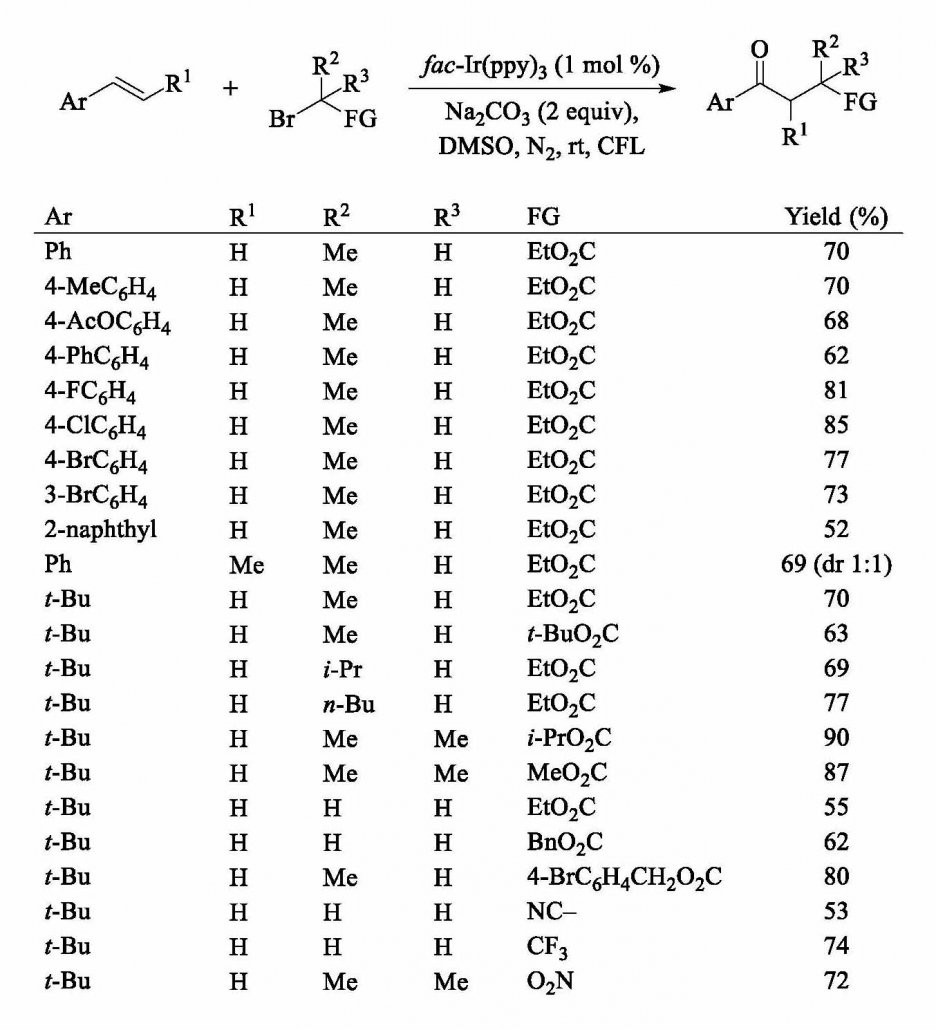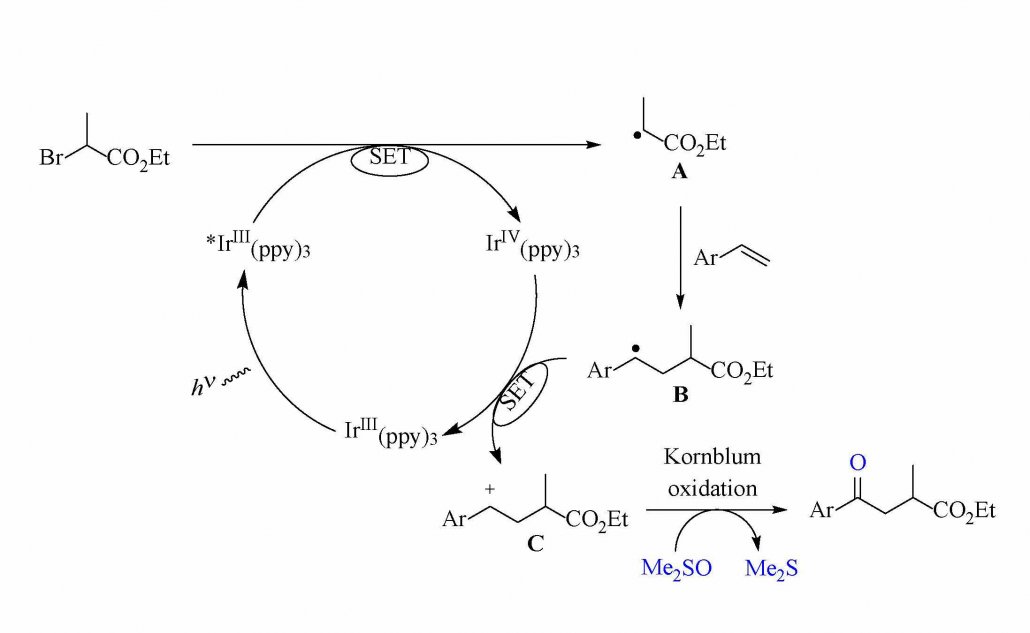Visible-Light-Mediated Synthesis of γ-Ketoesters in DMSO
γ-Ketoesters are common synthetic building blocks. Therefore, diverse synthetic methods have been developed to prepare these compounds. Recently, the Liu group reported a visible-light-mediated method, using compact fluorescent light (CFL), where the oxidative coupling of readily available vinylarenes and bromocarboxylates, followed by a Kornblum-type oxidation in DMSO, furnishes the desired γ-ketoester (equation in Table 1, FG = CO2R).1
After optimization of the reaction conditions, these researchers explored the substrate scope and found the reaction provides good to excellent yields of the γ-ketoester in all cases. Table 1 shows representative examples of yields using a variety of starting materials. In addition, it was also demonstrated that the reaction readily occurs when the functional group (FG) on the bromine-containing starting material is an electron-withdrawing group other than an ester. (See the last three entries in Table 1.)
Table 1: Optimized Conditions and Yields for the Light-Mediated Synthesis of γ-Ketoesters in DMSO

In addition to establishing the scope of this reaction, these researchers undertook studies to delineate the reaction mechanism. These studies showed that the inclusion of TEMPO resulted in no product formation, indicating that the reaction involves radical species. Replacing the styrene starting material with acetophenone also resulted in no product formation, suggesting that the oxidation step occurs in the late stages of the mechanism. These findings, along with a successful radical trapping experiment and a demonstration that DMSO is critical for high yields of the final ketoester, led to the mechanism proposed in Scheme 1.
Scheme 1: Proposed mechanism.
In this mechanism, the catalyst IrIII(ppy)3 is irradiated to produce the excited-state species *IrIII(ppy)3. The excited-state catalyst interacts through a single electron transfer with the bromoester to produce the radical intermediate A. The addition of the styrene to A then results in intermediate B. A single electron transfer from intermediate B to the oxidized catalyst IrIV(ppy)3 yields the carbocation C and regenerates the IrIII catalyst. Dimethyl sulfoxide then provides the oxidation of the γ-carbon, producing the γ-ketoester.
This reaction is advantageous in that its mild conditions allow successful reaction with even labile starting materials. Additionally, the starting materials for this reaction are all common and easy to obtain. These attributes make this reaction an attractive alternative to other protocols to make γ-ketoesters.
Debra D. Dolliver, Ph.D.
1Fang, X.-X.; Wang, P.-F.; Yi, W.; Chen, W.; Lou, S.-C.; Liu, G.-Q. Visible-Light-Mediated Oxidative Coupling of Vinylarenes with Bromocarboxylates Leading to γ-Ketoesters. J. Org. Chem. 2019, 8 4, 15677-15684.


Leave a Reply
You must be logged in to post a comment.